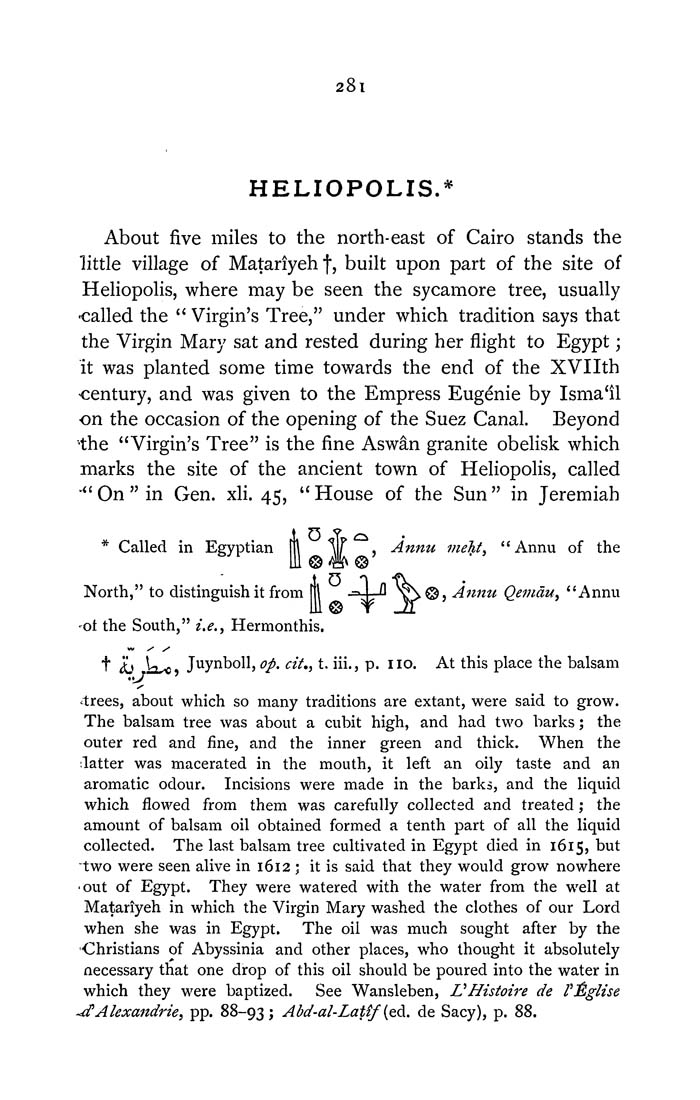HELIOPOLIS.*
About five miles to the north-east of Cairo stands the
httle village of Matariyeh |, built upon part of the site of
Heliopolis, where may be seen the sycamore tree, usually
•called the " Virgin's Tree," under which tradition says that
the Virgin Mary sat and rested during her flight to Egypt;
it was planted some time towards the end of the XVIIth
century, and was given to the Empress Eugenie by Isma'il
on the occasion of the opening of the Suez Canal. Beyond
•the "Virgin's Tree" is the fine Aswan granite obelisk which
marks the site of the ancient town of Heliopolis, called
'"On "in Gen. xli. 45, "House of the Sun" in Jeremiah
* Called in Egyptian m W , Annu meht, "Annu of the
North," to distinguish it from Ml -^ I /I v®' ^*^^'^^ Qemdu, *'Annu
'Ot the South," i.e., Hermonthis.
t ^, Vj^ Juynboll, op. cit,, t. iii., p. no. At this place the balsam
'trees, about which so many traditions are extant, were said to grow.
The balsam tree was about a cubit high, and had two barks; the
outer red and fine, and the inner green and thick. When the
latter was macerated in the mouth, it left an oily taste and an
aromatic odour. Incisions were made in the barks, and the liquid
which flowed from them was carefully collected and treated; the
amount of balsam oil obtained formed a tenth part of all the liquid
collected. The last balsam tree cultivated in Egypt died in 1615, but
two were seen alive in 1612 ; it is said that they would grow nowhere
•out of Eg}^pt. They were watered with the water from the well at
Matariyeh in which the Virgin Mary washed the clothes of our Lord
when she was in Egypt. The oil was much sought after by the
Christians of Abyssinia and other places, who thought it absolutely
necessary that one drop of this oil should be poured into the water in
which they were baptized. See Wansleben, VHistoire de V&glise
-dAlexandrie, pp. 88-93; Abd-al-Latif {tdi. de Sacy), p. 2>^,
|








